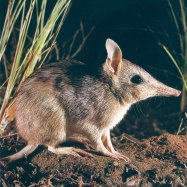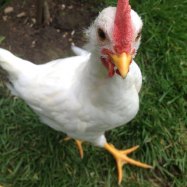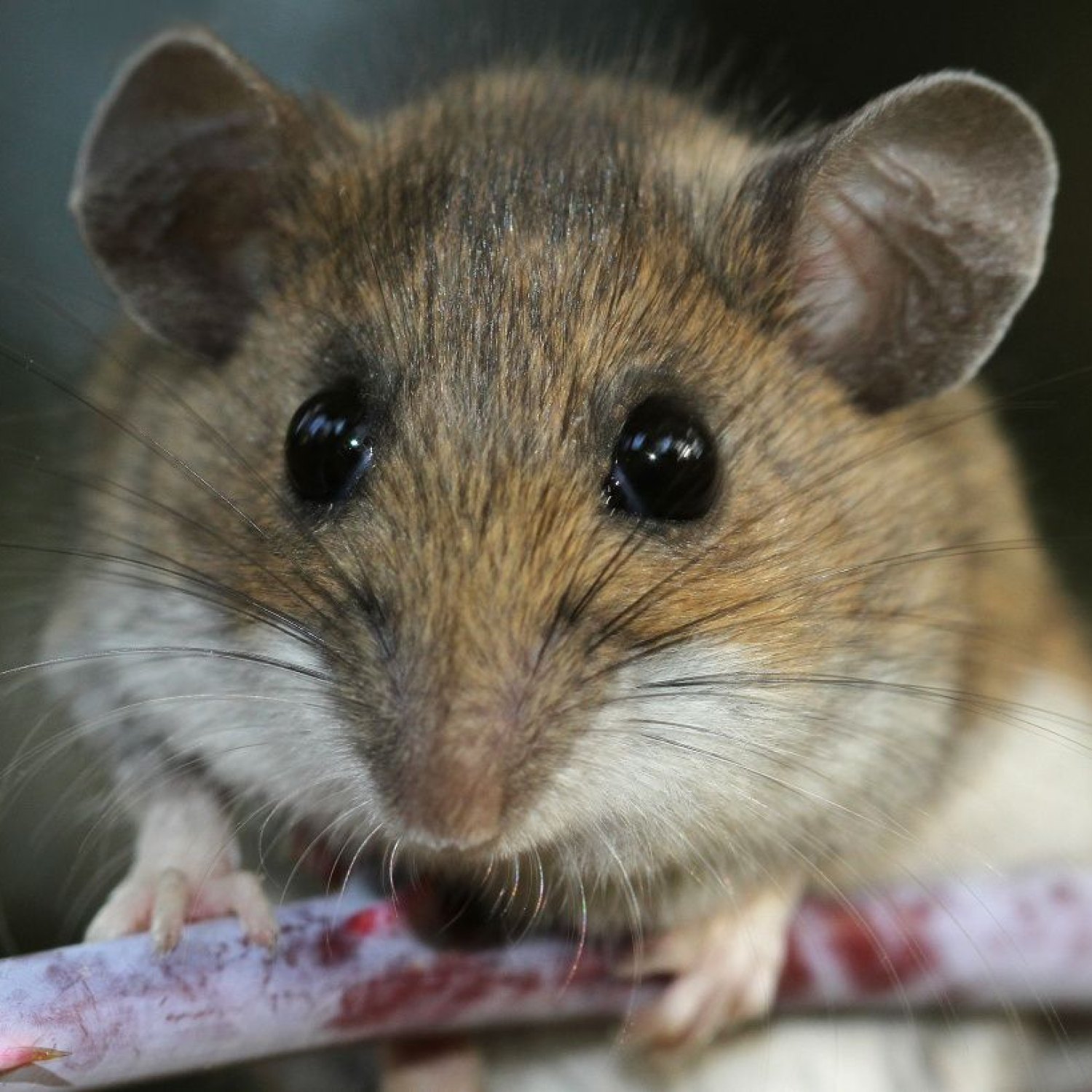
Grasshopper Mouse
3.5 to 5 inches (excluding the tail)
Meet the Grasshopper Mouse, a small and compact creature that can be found in the Southwestern United States. With an average length of 3.5 to 5 inches (excluding the tail), this adorable mouse belongs to the Cricetidae family. Although its name may suggest a herbivorous diet, the Grasshopper Mouse is actually a carnivore, known for its fast and agile hunting skills. Keep an eye out for this fascinating animal on your next Southwest adventure! #GrasshopperMouse #SouthwestWildlife #Cricetidae
Animal Details Summary:
Common Name: Grasshopper Mouse
Kingdom: Animalia
Habitat: Grasslands, deserts, and arid regions
The Mighty Hunter: Discovering the Fascinating World of the Grasshopper Mouse
The animal kingdom is full of unique and interesting creatures, each with its own special adaptations and behaviors. Among these creatures, the grasshopper mouse stands out as a particularly fascinating and impressive animal.The scientific name of this small yet mighty rodent is Onychomys torridus, but it is more commonly known as the grasshopper mouse. Found in the southwestern United States and Mexico, this small predator is a member of the animal kingdom, phylum Chordata, and class Mammalia Grasshopper Mouse. It belongs to the order Rodentia and the family Cricetidae, which includes other small rodents such as voles and mice.
While the name "grasshopper mouse" may sound like a strange combination, it perfectly describes this animal's unique features and behaviors. In this article, we will take a closer look at the amazing grasshopper mouse, its habitat, diet, and behaviors, and why it is often referred to as the 'mighty hunter' of the desert.
The Mighty Hunter's Habitat and Distribution
The grasshopper mouse can be found in the grasslands, deserts, and arid regions of the southwestern United States and Mexico. Its preferred habitats are semi-arid deserts, rocky areas, and grassy plains with sandy soil. These regions provide the perfect environment for the grasshopper mouse, as they offer plenty of prey and hiding spots.These small rodents are also known to be quite territorial, with each mouse inhabiting its own small patch of land. This behavior allows them to have access to a steady food supply without competition from other mice.
While their population is relatively stable, their distribution is limited to certain areas Giant Schnauzer. In the United States, they can be found in the states of Arizona, New Mexico, and Texas, while in Mexico, they primarily inhabit the northern states of Sonora and Chihuahua. Their specific geographic range is mainly determined by the availability of their preferred habitat.
The Secret Behind Their Predatory Behaviors
One of the most intriguing and distinctive features of the grasshopper mouse is its feeding behavior. Unlike most rodents that rely on a vegetarian diet, the grasshopper mouse is a carnivore. Its diet consists mainly of grasshoppers, insects, scorpions, and even small reptiles such as lizards.So how does a small rodent manage to hunt and capture such diverse prey? The answer lies in its specialized adaptations that make it a fearsome hunter. Firstly, their small bodies are equipped with sharp claws and powerful jaws, making them efficient predators. Additionally, they have keen senses, especially in their sense of smell and hearing, helping them locate their prey accurately.
Furthermore, the grasshopper mouse is immune to the venom of most scorpions, making it an excellent predator in the desert, where scorpions are a common food source. In fact, research has shown that the grasshopper mouse's resistance to scorpion venom is comparable to that of a hedgehog, an animal also known for its immunity to scorpion venom.
A Unique and Creative Diet
As mentioned earlier, the grasshopper mouse has a diverse diet, which often includes insects and reptiles. However, a significant portion of its diet consists of grasshoppers, which explains its name. These small rodents are quite creative in their hunting methods, and they have been observed using various tactics to catch their prey.One of their unique tactics involves mimicking the behavior of grasshoppers. When hunting, the grasshopper mouse will mimic the sounds and movements of a grasshopper, fooling its prey into coming closer. Once the grasshopper is within its reach, the mouse quickly pounces on it, using its sharp claws and teeth to kill it efficiently.
Another incredible adaptation of the grasshopper mouse is its ability to survive on a diet of just seeds, if necessary. During times of scarcity, such as severe droughts, these resilient rodents can adapt their diet to include seeds, making them highly adaptable creatures.
Physical Appearance and Behavior
The grasshopper mouse, although small in size, has a unique and appealing appearance. Its coloration ranges from light brown to grayish-brown, with a lighter underside. Its fur is short and dense, giving it a sleek appearance.This small predator has a compact body shape, measuring between 3.5 and 5 inches in length, excluding its tail. The tail itself is usually as long as its body, and it is used for balance when navigating rough terrain.
Besides its physical characteristics, the grasshopper mouse is also known for its impressive behaviors. They are highly territorial animals, and they mark their territory using a combination of urine and secretions from scent glands near their cheeks and feet.
Furthermore, grasshopper mice are nocturnal animals, meaning they are most active at night. They have excellent climbing abilities, and they are often found perched on bushes, rocks, or fences, scanning their surroundings for potential prey.
A Native of the Southwestern United States and Mexico
The grasshopper mouse is a native animal of the southwestern United States and Mexico. It can be found in these regions year-round, as it does not migrate or hibernate. Being native to the hot and arid climates of these areas, the grasshopper mouse has adapted to withstand extreme temperatures and dehydration.Even in the face of extreme heat and scarce water sources, the grasshopper mouse has been known to survive without access to water for days. This is possible due to its ability to conserve water and produce concentrated urine, allowing it to thrive in its hostile habitat.
The Human Impact on Grasshopper Mouse Populations
Despite its resilience and adaptability, the grasshopper mouse population has faced some challenges, mainly due to human impact on its habitat. Urbanization, ranching, and agriculture have encroached on areas where the grasshopper mouse lives, leading to habitat loss.Another significant threat to the population is the use of pesticides in agriculture, which can poison the grasshopper mouse's food sources and ultimately impact their survival. Conservation efforts are essential to ensure the continued existence of these incredible animals, as they play an essential role in the ecosystem.
A Fascinating Creature with an Essential Role in Nature
In conclusion, the grasshopper mouse is a unique and fascinating animal that has adapted to thrive in some of the most extreme environments in the world. Despite its small size, its unique hunting abilities and behaviors make it a formidable predator in the desert.With its role in controlling insect populations and its special adaptations for survival, the grasshopper mouse plays an essential role in the ecosystem. As humans, it is our responsibility to protect and preserve these incredible creatures and their habitats for generations to come. So the next time you spot a little mouse scurrying around the desert, remember that it could be the mighty hunter, the grasshopper mouse.

Grasshopper Mouse
Animal Details Grasshopper Mouse - Scientific Name: Onychomys torridus
- Category: Animals G
- Scientific Name: Onychomys torridus
- Common Name: Grasshopper Mouse
- Kingdom: Animalia
- Phylum: Chordata
- Class: Mammalia
- Order: Rodentia
- Family: Cricetidae
- Habitat: Grasslands, deserts, and arid regions
- Feeding Method: Carnivorous
- Geographical Distribution: Southwestern United States and Mexico
- Country of Origin: United States and Mexico
- Location: Southwestern United States
- Animal Coloration: Light brown to grayish-brown
- Body Shape: Small and compact
- Length: 3.5 to 5 inches (excluding the tail)
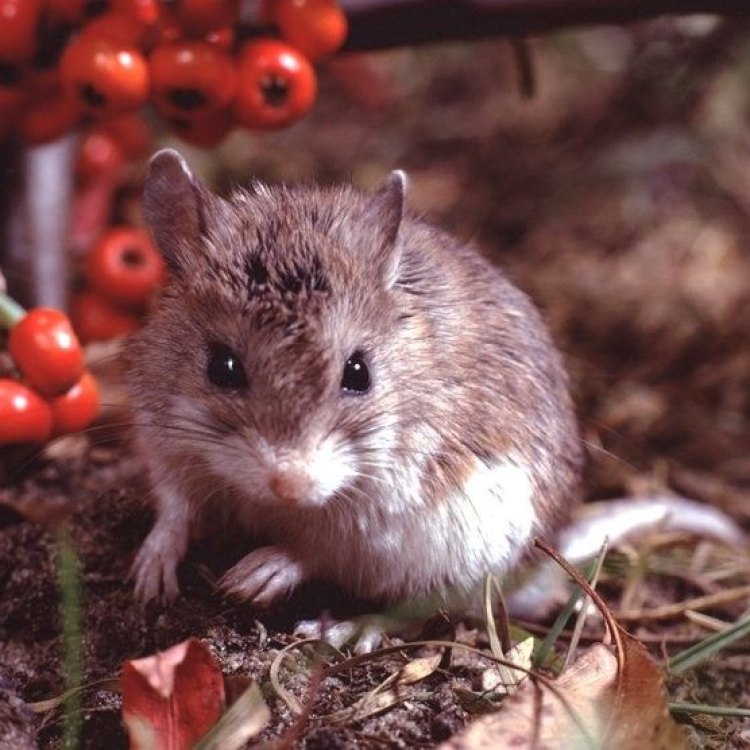
Grasshopper Mouse
- Adult Size: Weight: 0.2 to 0.7 ounces, Length: 4 to 5 inches (including the tail)
- Average Lifespan: 1 to 1.5 years
- Reproduction: Mating occurs throughout the year
- Reproductive Behavior: Promiscuous mating system
- Sound or Call: Howls and barks
- Migration Pattern: Non-migratory
- Social Groups: Solitary
- Behavior: Territorial and aggressive
- Threats: Predation, habitat loss, climate change
- Conservation Status: Least Concern
- Impact on Ecosystem: Important predators of insects and small mammals
- Human Use: Not commonly used by humans
- Distinctive Features: Large hind legs, long tail with a tuft of hair at the end
- Interesting Facts: Grasshopper mice are immune to the venom of bark scorpions
- Predator: Owls, snakes, and other larger carnivores
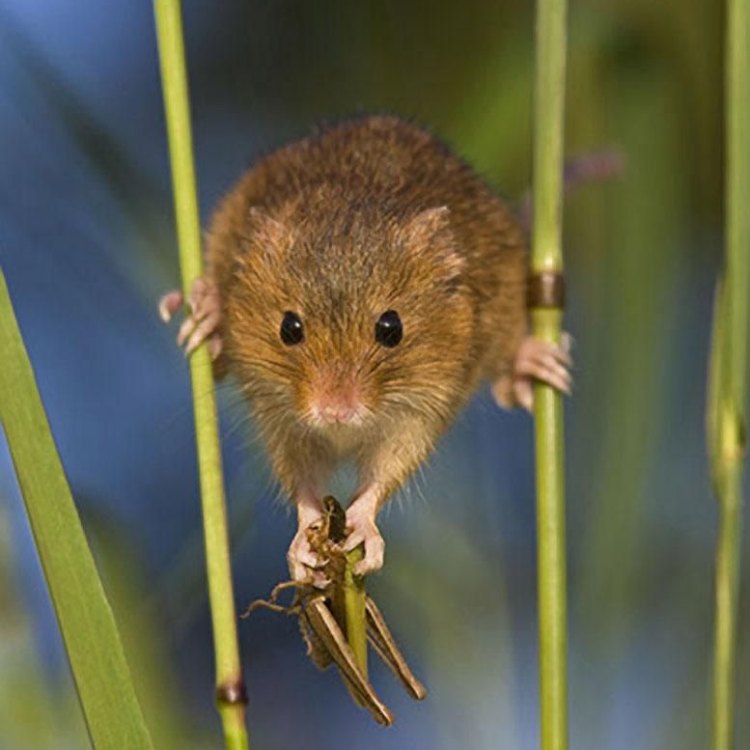
Onychomys torridus
The Cunning and Unique Grasshopper Mouse: A Tiny Terror in the Desert
In the dry and harsh deserts of North America, there is a small but mighty predator roaming the sandy dunes and rocky hills. The grasshopper mouse may seem like an unassuming rodent at first glance, but don't be fooled by its small size. This tiny terror is one of the most unique and fascinating creatures to call the desert home.Let's dive into the world of the grasshopper mouse and discover what makes this species so distinctive and vital to its ecosystem PeaceOfAnimals.Com.
Size and Appearance
The grasshopper mouse may be small, only weighing between 0.2 to 0.7 ounces, but it packs a punch. Its body measures 4 to 5 inches in length, including its long tail. These mice are generally gray or brown in color, blending in perfectly with their desert surroundings.But its most distinctive feature lies in its hind legs. These powerful limbs are much larger in proportion to its body, giving the grasshopper mouse the ability to leap and pounce with agility and speed. Its long tail also plays a role in its acrobatic movements, and it is topped off with a tuft of hair at the end.
Lifespan and Reproduction
The average lifespan of a grasshopper mouse is 1 to 1 Golden Irish.5 years, but this can vary depending on factors such as food availability and predators. Unlike many other species, grasshopper mice have a promiscuous mating system, meaning that they mate with multiple partners. Mating can occur throughout the year, and females can have multiple litters per breeding season.Behavior and Social Groups
Despite their small size, grasshopper mice are territorial and aggressive creatures. They mark their territory with urine and scents to defend it from other mice and predators. These mice also have a solitary lifestyle, preferring to live and hunt alone. However, they may come together in small groups during the breeding season.Sound and Migration Patterns
One of the most intriguing things about grasshopper mice is their vocalizations. They communicate using a variety of sounds, including howls and barks. These vocalizations are essential for defending their territory and attracting mates.Unlike many other rodents, grasshopper mice are non-migratory. They have adapted to live in the harsh desert environment and do not need to migrate to survive.
Threats and Conservation Status
Like many other species, the grasshopper mouse faces threats such as predation, habitat loss, and climate change. Owls, snakes, and other larger carnivores are their main predators. Habitat loss due to human development in their habitats also poses a significant threat to their survival.Despite these concerns, the grasshopper mouse is currently listed as "Least Concern" on the conservation status scale. This is due to their widespread distribution and stable population size.
Impact on the Ecosystem
Despite its small size, the grasshopper mouse plays a vital role in its desert ecosystem. It is a fierce predator, feeding on a variety of insects and small mammals, including scorpions and other venomous prey. This makes them important in controlling insect populations and maintaining the balance of the ecosystem.Additionally, grasshopper mice are immune to the venom of bark scorpions, making them one of the few animals that can prey on these dangerous creatures. This unique adaptation makes them even more valuable to their ecosystem.
Human Use and Interesting Facts
Unlike many other species of mice, grasshopper mice are not commonly used by humans for food or fur. However, they have been studied for their unique immunity to venom and their vocal communication patterns.One of the most interesting facts about grasshopper mice is their resistance to the venom of bark scorpions. While other animals may suffer severe effects from a sting, the grasshopper mouse can shrug it off and even use it to its advantage as a food source.
Predators of the Grasshopper Mouse
Despite their territorial and aggressive behavior, grasshopper mice do have predators in the wild. As mentioned, owls, snakes, and other larger carnivores are their main predators. However, due to their quick and agile movements, they can often outrun and outmaneuver their predators.The Grasshopper Mouse, a Tiny Terror in the Desert
In conclusion, the grasshopper mouse may be small, but it is a fierce and cunning predator, essential to the delicate balance of the desert ecosystem. Its unique adaptations, such as its large hind legs, resistance to scorpion venom, and vocal communication, make it a fascinating species to study and admire.But we must also remember that this tiny terror is facing threats to its survival, and it is up to us to ensure their continued existence in the wild. By preserving their habitats and protecting them from predators and other threats, we can help this extraordinary creature thrive in the desert for generations to come.

The Mighty Hunter: Discovering the Fascinating World of the Grasshopper Mouse
Disclaimer: The content provided is for informational purposes only. We cannot guarantee the accuracy of the information on this page 100%. All information provided here may change without prior notice.




